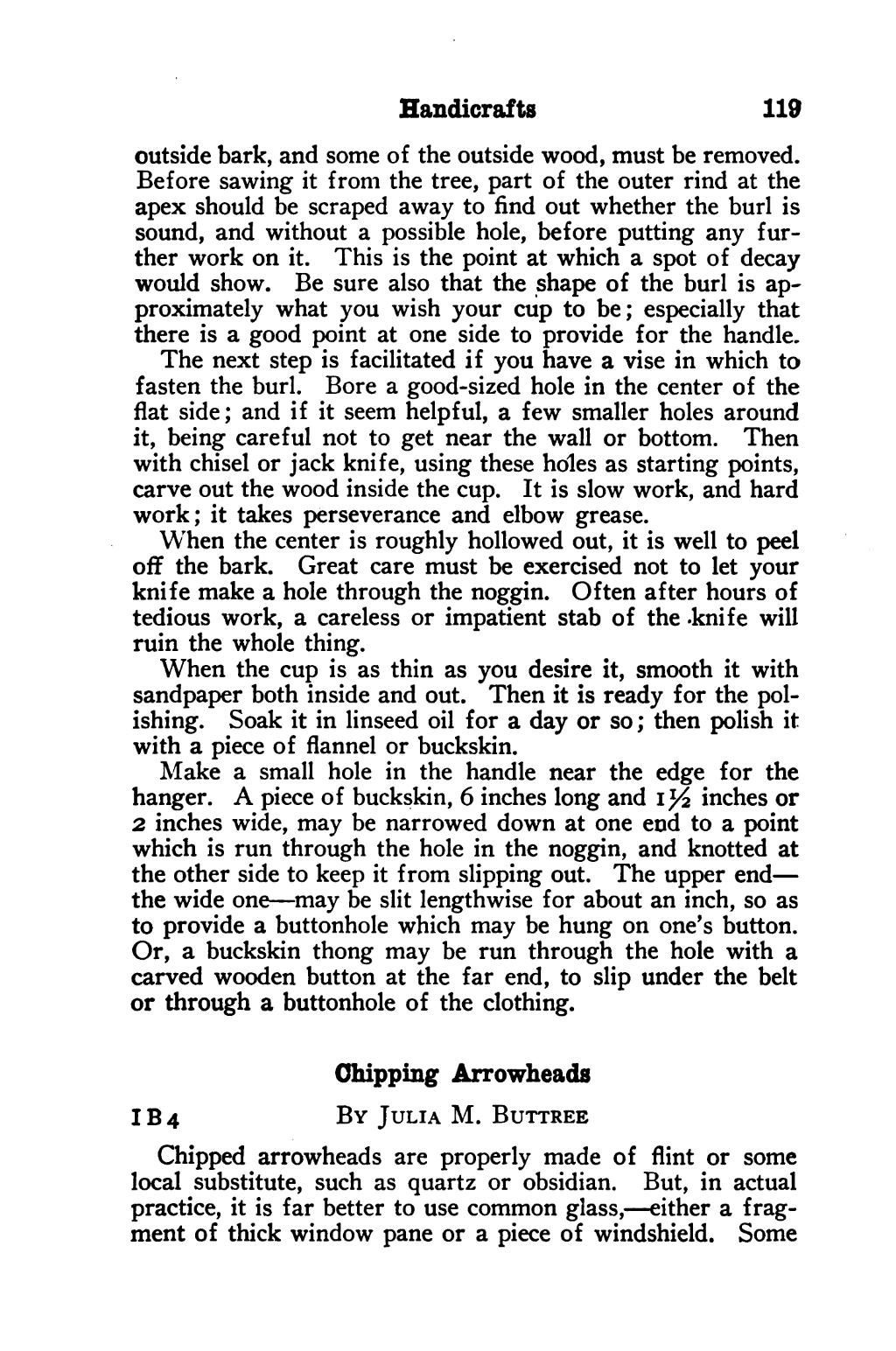Handicrafts 119 outside bark, and some of the outside wood, must be removed. Before sawing it from the tree, part of the outer rind at the apex should be scraped away to find out whether the burl is sound, and without a possible hole, before putting any fur- ther work on it. This is the point at which a spot of decay would show. Be sure also that the shape of the burl is ap- proximately what you wish your cup to be; especially that there is a good point at one side to provide for the handle. The next step is facilitated if you have a vise in which to fasten the burl. Bore a good-sized hole in the center of the flat side; and if it seem helpful, a few smaller holes around it, being careful not to get near the wall or bottom. Then with chisel or jack knife, using these holes as starting points, carve out the wood inside the cup. It is slow work, and hard work; it takes perseverance and elbow grease. When the center 1s roughly hollowed out, it is well to peel off the bark. Great care must be exercised not to let your knife make a hole through the noggin. Often after hours of tedious work, a careless or impatient stab of the -knife will ruin the whole thing. When the cup is as thin as you desire it, smooth it with sandpaper both inside and out. Then it is ready for the pol- ishing. Soak it in linseed oil for a day or so; then polish it with a piece of flannel or buckskin. Make a small hole in the handle near the edge for the hanger. A piece of buckskin, 6 inches long and 1% inches or 2 inches wide, may be narrowed down at one end to a point which is run through the hole in the noggin, and knotted at the other side to keep it from slipping out. The upper end— the wide one—may be slit lengthwise for about an inch, so as to provide a buttonhole which may be hung on one’s button. Or, a buckskin thong may be run through the hole with a carved wooden button at the far end, to slip under the belt or through a buttonhole of the clothing. Chipping Arrowheads IB4 By Jutta M. BuTTREE Chipped arrowheads are properly made of flint or some local substitute, such as quartz or obsidian. But, in actual practice, it is far better to use common giass,—either a frag- ment of thick window pane or a piece of windshield. Some
Stránka:roll 1931.djvu/135
Z thewoodcraft.org
Tato stránka nebyla zkontrolována
